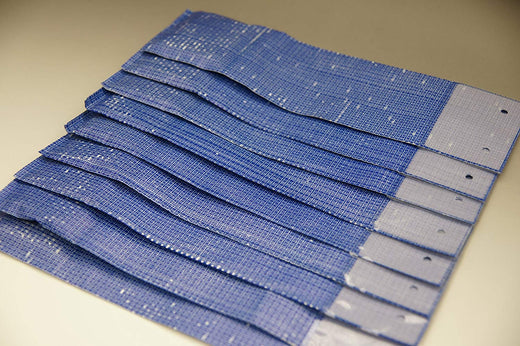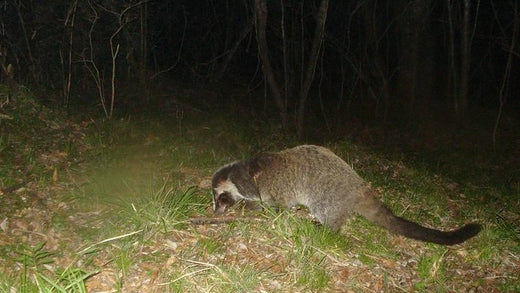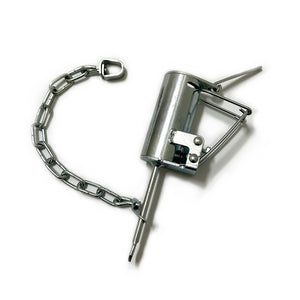Children's raccoons are very cute and are very popular due to the influence of TV animation. However, the raccoon is an alien species that does not originally live in Japan. Contrary to its appearance, it has a rough temperament and can cause damage to agriculture, harm to humans, and infectious diseases, so countermeasures and extermination must be taken.
This time, for those who are worried about raccoon damage, we will explain countermeasures, extermination methods, and ecology. Please refer to it if you are having trouble with damage.
3 reasons why you should get rid of raccoons
Let's start by looking at why raccoons should be exterminated as pests. There are three main reasons.
Reason 1. Due to severe economic damage
The first reason is the serious economic damage.
According to a report by the Director of Agriculture, Forestry and Fisheries, damage to crops by raccoons was about 126 million as of 2003, but the damage is increasing year by year, mainly in the Kinki region and Hokkaido. In 2016, agricultural damage amounted to about 330 million yen, more than tripled, and the increasing trend has continued since then.
Because raccoons are omnivorous, they damage a variety of crops, but they especially damage vegetables and fruit trees such as corn, melons, watermelons, and strawberries, as well as livestock feed. Also, in the livestock and aquaculture industries, destruction of rolls and packs of damaged grass. Damage to the livestock industry, such as biting off the teats of dairy cows and eating chickens, and damage to fisheries, such as predation of fish at fish farms, have also been reported.
In addition to this, damage to houses and cultural assets is also a problem. It has been reported that palm civets and raccoons invade private houses, shrines and temples, excrement in the attic, and damage buildings and arts and crafts. Damage occurs when raccoons explore buildings for the purpose of nesting, when they invade buildings, and when they nest and settle in buildings. Damage to cultural assets has also been reported, such as claw marks found at Byodo-in Phoenix Hall and Kiyomizu-dera Temple.
Reference: Ministry of Agriculture, Forestry and Fisheries "Wildlife Damage Prevention Manual"Reason 2. There is a risk of transmitting infectious diseases
Second, there is the risk of transmitting infectious diseases.
Raccoons can cause infections that can cause severe symptoms in humans. The most serious risk is a common infectious disease between humans and raccoons.
Since parasites such as raccoon Strongyloides, which had not been confirmed in Japan until now, have been discovered in wild raccoons, it is possible that raccoons may bring in new common infectious diseases that have not existed in Japan. It can be said that the nature is high. Common infectious diseases such as Japanese encephalitis virus, bacteria such as Campylobacter and Salmonella, and raccoon roundworms that have long existed in Japan have often been confirmed in wild raccoons.
In addition to this, there is also the risk of becoming a vector for serious infectious diseases, such as raccoon ascariasis, which has not been reported in humans in Japan, and rabies, which has not occurred in animals since 1957. It is necessary to take lessons.
Below is a description of the most common raccoon infections.
raccoon ascariasis
Adult raccoon roundworms are cylindrical, 9-11 cm long for males and 20-22 cm long for females, and parasitize the small intestine of raccoons.
Eggs are excreted in the faeces of infected raccoons. If these eggs are ingested orally, the hatched larvae can migrate from the intestinal tract into the central nervous system, resulting in visual disturbances and visual disturbances. can lead to serious neurological damage and even death.
In Japan, there have been no reports of cases of the disease in humans or cases of detection in wild raccoons, but detection in raccoons kept in zoos has been confirmed.rabies
Rabies is a viral infectious disease caused by the rabies virus. Nearly 100% of those who develop the disease die. Rabies kills about 50,000 people worldwide each year, more than 95% of them in Africa and Asia.
The rabies virus is contained in the saliva of infected animals. Nervous system cells are infected when an infected animal bites, licks a wound, or licks the mucous membranes of the eyes or mouth. Also, animals lick their front paws, so if you get scratched by a nail that has the virus on it, you can become infected.
Leptospirosis
Leptospirosis is a bacterial infection caused by infection with the pathogenic bacterium Leptospira. It is carried in the kidneys of infected animals and excreted in the urine. It is transmitted percutaneously or orally through water or soil contaminated with the urine of carrier animals.
Symptoms vary from mild to severe, but a sudden fever is observed. In mild cases, symptoms such as those of a cold or influenza are relieved, but in severe cases, jaundice, bleeding, and renal failure are observed. .
Pathogenic leptospira have been detected in wild raccoons in Hokkaido and Kanagawa prefectures in Japan.tick-borne infections
Ticks that carry serious infectious diseases such as severe febrile thrombocytopenic syndrome (SFTS), for which fatal cases have been reported, live in grassy areas deep in the mountains and attach themselves to the bodies of wild animals.
Among wild animals, raccoons often invade urban areas, so there is a risk that they may become vectors for viral infections caused by ticks in urban areas.
A survey of nearly 2,000 raccoons in a certain region of Japan found that the rate of antibody prevalence against the SFTS virus has risen sharply, with the positive rate surpassing 50% in 2015. I have.Reason 3. impact on Japan's ecosystem
The third is that it will affect the ecosystem of Japan.
The raccoon is an alien species designated by the Ministry of the Environment as a specific alien species. Raccoons are omnivorous and prey on a wide variety of animals and plants. Furthermore, due to its high reproductive power, it may affect ecosystems unique to Japan.
There have been reports of raccoons destroying gray heron colonies, preying on salamanders and Japanese pond turtles, and looting nests of owls and goshawks. If other animals are in the same living area, they tend to push them out and monopolize them, so there is a risk of imbalanced animal society.
In addition to the direct impact, palm civets, who lived quietly in coexistence with other animals, were kicked out of the raccoon and began appearing in human areas. As a result, there have been cases of increased damage to crops by palm civets.
About raccoon measures and extermination methods
Raccoons are designated as a Specified Alien Species under the Alien Species Law (Law Concerning the Prevention of Damage to Ecosystems by Specified Alien Species), which was enacted in 2004.
The Ministry of the Environment aims to eradicate raccoons, but as mentioned above, raccoons have high fertility and adaptability, and their natural predators are humans only, so their distribution area is expanding rapidly.
Once established, it is difficult to eliminate completely, and it is expected to cause great damage to crops and the living environment.
Now, let's take a look at specific measures for raccoon countermeasures and extermination methods.If you see a raccoon
First of all, what should I do if I see or discover a raccoon?
If you see a beast that seems to be a raccoon, do not approach it unnecessarily. If possible, take pictures or videos with a digital camera or mobile phone, etc., and contact the nearest municipal office or prefectural agency.
We will also contact you if we find traces that are thought to be from raccoons.
- "The watermelon had a round hole and only the inside was eaten."
- "The corn was peeled and eaten."
- "There are five-toed footprints."
In such cases, there is a high possibility that it is caused by a raccoon. Take early action to prevent further damage.
Never feed
Let's be thorough in the area that feeding is absolutely not done. Once you feed them, they will remember the taste of food that humans eat, and there is a fear that agricultural damage will spread.
In addition, it is necessary for the whole community to make efforts such as not leaving agricultural products to be discarded outdoors, using nets to prevent people from eating garbage (garbage), and making sure that garbage is put out on time.
Some local residents have the idea of animal welfare (the idea that feeding starving animals leads to animal welfare). In many cases, such people are reluctant to refrain from feeding them or take countermeasures and extermination actions.
For those who have this way of thinking, let's try to get them to understand the correct information first. Through flyers and explanations, it is important to get people to understand that feeding will increase the number of raccoons that need to be damaged or exterminated.
Measures by capture
Reducing the number of raccoons by catching them with box traps is the most effective means of dealing with raccoon damage. There aren't many traders and hunters who specialize in raccoon hunting, but most of them are killed to control harmful crop damage or to control alien species.
In 1991, only 9 were captured, but in 2010, about 25,000 were captured. This is evidence that raccoon damage to crops is increasing.
However, in areas where raccoons have already taken root, it is not possible to reduce the number of raccoons unless a large number of traps are set up across the area (as a united body) to catch them. Even if box traps are placed and captured at points (individually) at damaged houses, there is a possibility that other raccoons will come in and cause damage again.
Raccoons are also dexterous with their hands and often try to touch traps to get food. When using box traps, those with a complicated trigger mechanism or those using weak wires may have poor capture efficiency or may be damaged immediately.
Hunting without a permit is against the law. Talk to local government first
I introduced that catching raccoons is an effective countermeasure against raccoons, but in fact, catching raccoons without permission is prohibited by the Alien Species Law (Law Concerning Damage to Ecosystems, etc. Caused by Specified Alien Species).
First of all, it is recommended to consult with the department in charge of wildlife damage in each local government and promote countermeasures on a community-wide basis.
Characteristics and ecology of raccoons
It is effective to know the characteristics and ecology of raccoons when promoting countermeasures and capture of raccoons. Here, we will introduce in detail the habitat, distribution, characteristics, etc.Habitat and distribution
Raccoons are native to the United States, Canada, and Central America (Panama, etc.), and were brought to Japan from North America for breeding.
In 1962, a group of 12 animals escaped from a zoo in Inuyama City, Aichi Prefecture, and became wild. In addition, since the late 1970s, there has been a breeding boom due to the influence of TV animation, and individuals that had been raised in various parts of Japan were expelled, and wild individuals began to inhabit widely.
They generally live in forests near water, but they can adapt to a wide range of environments. In recent years, it has expanded its distribution area even in urban areas where food is abundant, and has become a big problem.
In the North American continent, where they are native, carnivorous animals such as pumas and coyotes are natural enemies, but Japan has no such natural enemies, so the population easily increases.
characteristics and ecology
From here, we will look at the characteristics and ecology of raccoons.[Differences due to body size and gender]
The length of the head and body is about 40-60cm, the length of the tail is 20-40cm, and the weight is about 4-10kg. They have gray to light brown fur and a long, bushy tail with black horizontal stripes.
In addition, as a difference from other animals, it is characterized by its very dexterous hands (front legs) and good at actions such as grasping, peeling, and hollowing out. Standing on its hind legs, grabbing things, and hollowing out only the insides of fruits are movements unique to raccoons, which are dexterous with their hands. They are known for their relatively high learning ability.
Males are larger in body size than females. The reproductive capacity is high, and females give birth to 2 to 6 offspring from spring to summer.
Females have a high pregnancy rate because they are able to reproduce when they reach one year of age. In one captive survey, the pregnancy rate was 75% for one-year-olds and 100% for those two years and older. In addition, when the temperature drops below minus 4 degrees, it will go into hibernation (semi-hibernation).
It is nocturnal, and usually sleeps in trees or between houses during the day. It is good at climbing trees, pillars, and walls with its five-fingered claws. Life expectancy in the wild is 5 to 8 years.
[Characteristics of cries, droppings, and footprints]
Their calls are distinctive and easily distinguishable from other beasts. It makes voices such as "kuru-ru-ru" and "cue", as well as dog-like voices when intimidating.Because they are omnivorous, the size and shape of their droppings will vary depending on what they eat. Do not touch it as it may cause infection. In addition, because they walk plantigrade (the soles of their feet touch the ground up to their heels), they have the characteristic of leaving clear footprints.
By the way, dogs and cats are semiplantar, with only their toes touching the ground. The footprints of other native animals are easy to distinguish from the shape and size of the five toes.
[Personality]
While they are young, they may get attached to people, but when they become adults (especially when they are in heat), their temper becomes rough, making it difficult for the general public to keep them as pets. There is also a case in which a raccoon was kept at home and then released, and was sent to the prosecutor's office on suspicion of violating the Act on Specified Alien Species (raising, releasing) .
summary
Agricultural damage caused by raccoons is increasing year by year, and in 2016, the amount of damage exceeded approximately 330 million yen. This is a calculation that has tripled in just 10 years, and you can see the seriousness of the situation.
In addition, the risk of infectious diseases transmitted by raccoons, the damage to buildings, and the impact on native organisms are enormous, and urgent countermeasures and extermination are required.
If you discover damage caused by raccoons, first consult with the wildlife damage department of your local government and take measures with the entire community.

 箱罠
箱罠
 くくり罠
くくり罠
 パーツ類
パーツ類
 電気柵
電気柵
 自作キット
自作キット
 防獣グッズ
防獣グッズ
 監視カメラ
監視カメラ




![Folding type box trap [single door]](http://inohoi.jp/cdn/shop/products/main_300x300_crop_center.progressive.jpg?v=1625808867)




 box trap
box trap
 tying trap
tying trap
 enclosure trap
enclosure trap
 Prevention and avoidance goods
Prevention and avoidance goods
 electric fence
electric fence
 trap surveillance camera
trap surveillance camera
 transportation goods
transportation goods
 Trap detection sensor
Trap detection sensor
 hunting supplies
hunting supplies
 game cookware
game cookware
 hunting books
hunting books
 Anti-bird goods
Anti-bird goods
 Agricultural materials/machinery
Agricultural materials/machinery
 Gibier
Gibier
 boar
boar
 deer
deer
 Kyon
Kyon
 monkey
monkey
 raccoon
raccoon
 Badger
Badger
 palm civet
palm civet
 raccoon dog
raccoon dog
 nutria
nutria
 mouse or rat
mouse or rat
 Mole
Mole
 bear
bear
 pigeon
pigeon
 Crow
Crow







